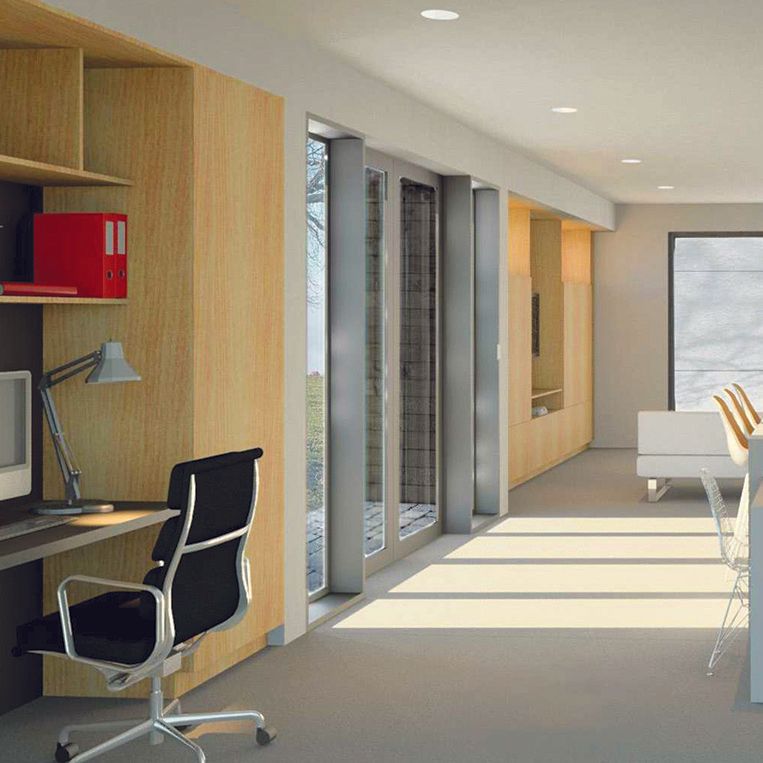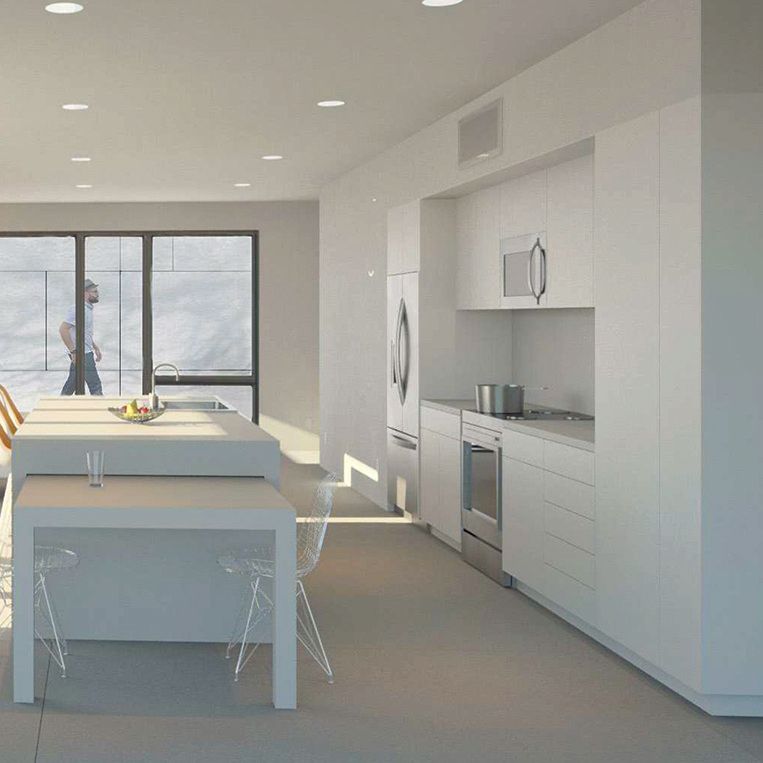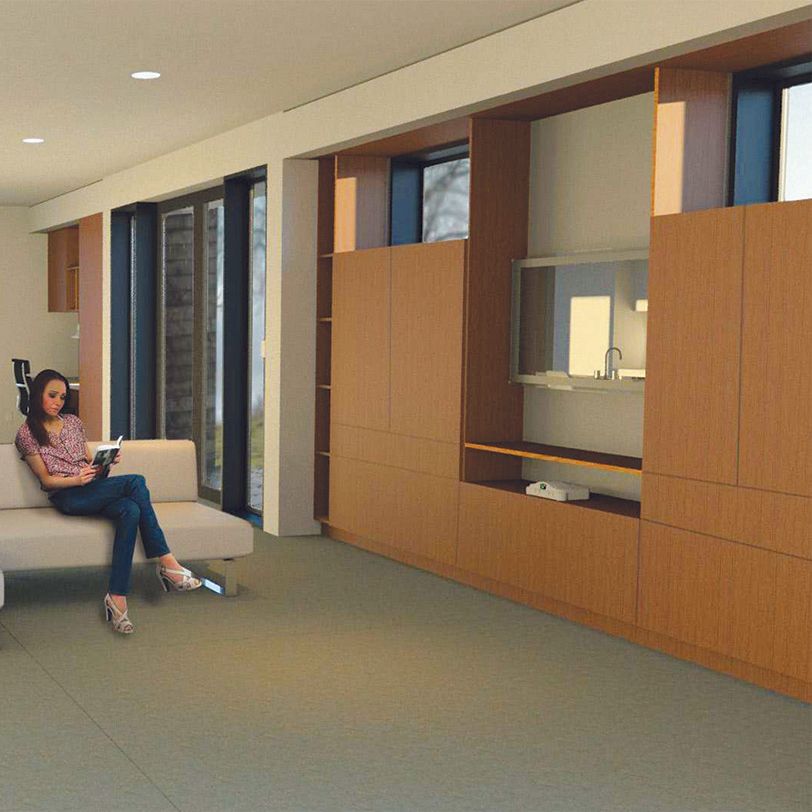The Montgomery Triplets
The goal of the Montgomery Triplets strives to provide affordable, sustainable, low-income housing to aid in alleviating the current housing crisis facing Salt Lake City.
The project represents a collaborative and mutually-beneficial effort between the spring 2018 team of graduate students from the University of Utah’s College of Architecture & Planning and Salt Lake City’s Department of Housing & Neighborhood Development (HAND). The students engaged in a real-world, design-build project while providing pro bono design and construction services for Salt Lake City which, in turn, will utilize an ‘odd lot’ from its portfolio to generate a high-quality, low-cost, sustainable housing solution for low-income individuals and families.
Strategy
The 1/2 acre lot that is located in the Poplar Grove neighborhood lies vacant and unused as of 2018. Prior attempts for development lacked feasibility given the presence of a 30-feet-wide canal easement (vacated in May 2014) through the property and the discrepancy between the location’s R-1/5000 zoning constraints and its large/deep lot size (22,359 sq. ft. with narrow street frontage of 119’-3”).
To achieve the project goals, the Montgomery Triplets project proposes to subdivide the selected lot into four lots: three lots of equal dimensions to be used for detached, single-family homes plus one lot of lesser area to be used as a shared community space. These lots conform with the intent of current zoning regulations and fulfill much more than the minimum objectives required for a planned-development designation.
Affordable Housing
The provision of affordable housing, as a means to assist in alleviating Salt Lake City’s housing crisis, stands at the top of the list of fixed priorities for the Montgomery Triplets - the project presents the unique opportunity to implement a new affordable housing model wherein the City retains land ownership in perpetuity while providing affordable ownership of all existing and future improvements to resident homeowners for the duration of their lifetimes. Such an approach establishes a new standard of stability, equity and opportunity within Salt Lake City’s overstrained and imbalanced housing market.
Rough estimates of affordability, based on an Area Median Income (AMI) of $37,500 per household within the Poplar Grove area, yield a payment of $1,200 per month including $180/month for utilities and building insurance, for a home initially costing approximately $217,000 ($121/sq. ft. for 1,800 sq. ft. total gross floor area) at no down payment. This estimate upholds the affordable housing goal detailed in Growing SLC: a Five-Year Housing Plan by staying within the “40 percent AMI and below” range. Adding a 20% down payment, the AMI will be at 31%, which is well below the required 40%.
Resilience and Sustainability
Another foundational priority of the Montgomery Triplets, in accordance with the goals previously outlined, lies in the realm of long-term environmental stewardship and sustainability. Montgomery Place espouses a strong sensitivity to environmentally-friendly and energy-saving design features, construction methods and sustainable living strategies including but not limited to the following techniques:
- Compliance with the U.S. Department of Energy’s “Zero Energy Ready Home Program"
- Implementation of Passive House Institute design principles for insulation values, air tightness and passive solar heating/lighting
- Specification of energy-saving appliances (Energy Star or better), low-U-value windows and efficient, easily-maintained HVAC systems (radiant heating and mini-split heating/cooling)
- Utilization of super-insulated, air-tight construction techniques (SIPS prefab panels)
- Highly-insulated, shallow, thickened-edge, concrete slab-on-grade construction
- Use of highly-durable, zero-maintenance metal cladding for building envelope protection
- Specification of low/no-VOC (Volatile Organic Compound) materials and finishes
- Optimization of building design for simplified/minimal footprint and solar shading
- Energy-modeling analysis of overall building systems and design using Sefaira software
- Application of onsite drainage and water-runoff mitigation techniques (bio swales)
Common Spaces
The Montgomery Triplet Development offers a highly valuable and rare amenity to the community through the inclusion of a shared, open space, (similar to a ‘pocket park’ or communal ‘front yard’) inhabiting the development’s street frontage. This green space incorporates opportunities for selective location of trees and other vegetation as well as for areas of playground/activity space, outdoor eating/lounging space and open green space for general use.
On a broader scale and timeline, this common space provides flexibility and invites the greater neighborhood to explore mutually-beneficial alternatives into the future, such as, sport/game courts, gardens, splash pads, seating areas, art installations, additional landscape features and etc. Moreover, the design of Montgomery Triplets with its shared open space and access ways (established as easements) already necessitates the implementation of a home-owners’ association (HOA), which then ensures steady upkeep of all grounds and facilities. Furthermore, special provisions are included therein to preserve the openness and spatial continuity of the overall development, e.g., the prohibition of fences or other barriers between the new lots in favor of the planting of trees and vegetation to achieve privacy. The result provides an open, safe, clean, pleasant and inviting environment for all to enjoy while also maintaining an ample sight and sound buffer to the homes within the development.
Project Blackboard
Design: Spring 2018
Individual Building size: approx. 1,700 SF
Individual Lot size: 5,000 SF
Direct construction cost goal: $190,000 per unit (including units being prepared for a 600 SF ADU)
Designed to Passive House Standard
Architecture and Energy Performance Simulation Student Team:
Joseph Bradshaw, Scot Clark, Andrew Dahlman, Daniel Guthrie, Zachary Heslop, Mitch Hope, Nader Nikgoftar, Christopher Thompson and David Zimmermann
Instructors: Jörg Rügemer (Design Studio), Shundana Yusaf (Theory), Ryan Smith (Technology)
Client: Salt Lake City Corporation, Housing and Neighborhood Development
Photo credits: Student Team





